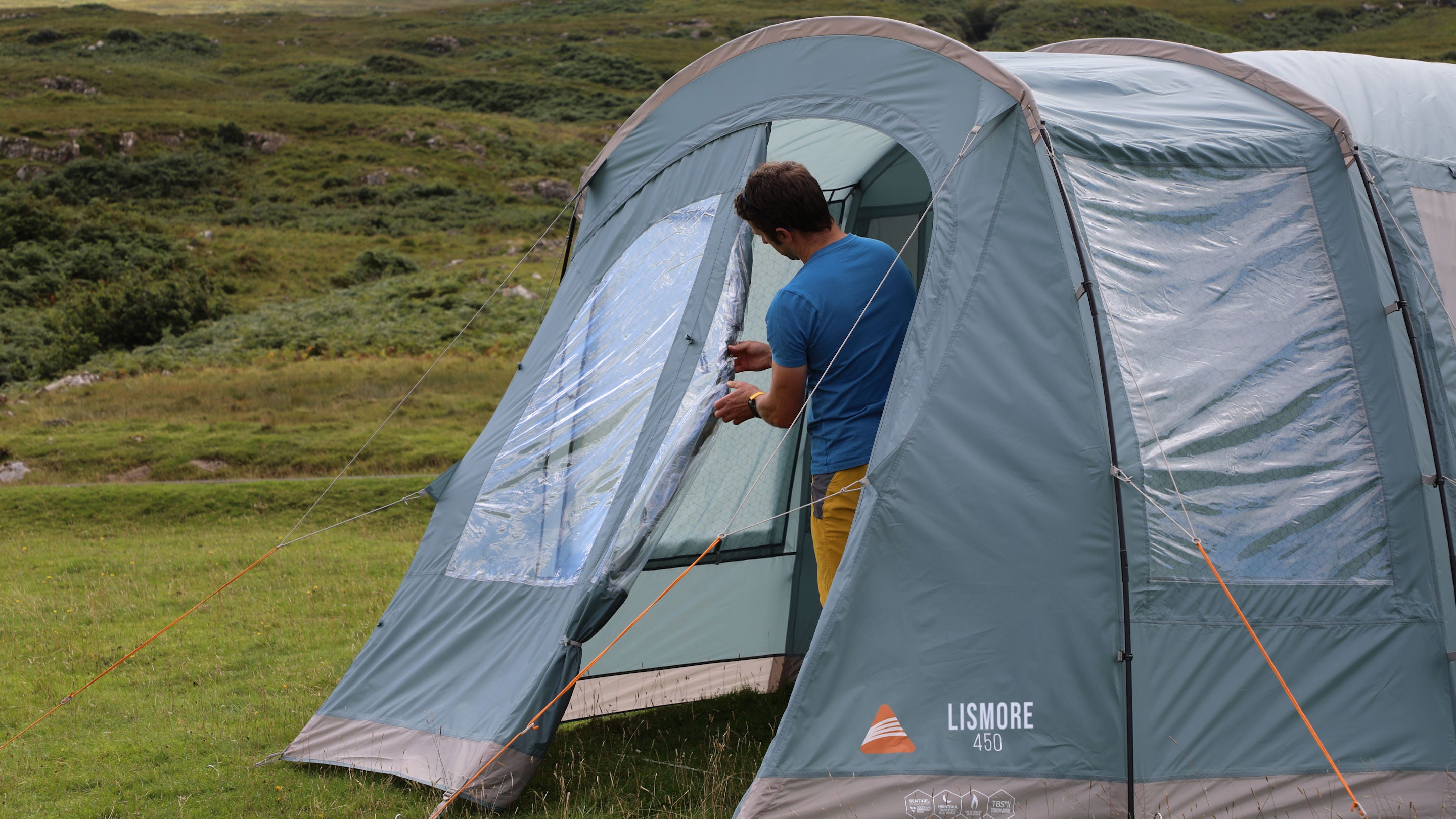
WM Camping Tent Care Guide: Prolonging Your Tent's Lifespan
Your tent is your cozy retreat amidst the wild outdoors. Whether you're embarking on a family adventure or seeking solitude in nature, taking proper care of your tent ensures it remains a reliable companion for many journeys to come.
The difference between a tent that lasts for just one trip and a tent that weathers countless adventures lies in the way you maintain it. To help you get the most out of your investment, we've compiled a comprehensive tent care guide. Follow these steps to keep your tent in top-notch condition and avoid issues like mould, stains, or leaks.
Essential Tent Care Checklist
Before we delve into the nitty-gritty of tent care, let's make sure you're equipped with the necessary tools for the task. Here's a handy shopping list to consider:
- Tent Footprint: A groundsheet specifically tailored to your tent's size. It safeguards the tent's underside from debris and moisture, reducing the need for frequent cleaning.
- Duct Tape: This versatile adhesive is your camping best friend. It serves as a quick fix for minor repairs on poles or holes in the groundsheet.
- Dust Pan and Brush: An easy-to-carry kit to ensure your tent's interior is debris-free before packing.
- Reproofer: Essential for maintaining waterproofing, especially after a few uses. Only apply it when needed to maintain the tent's water resistance.
- Seam Sealant: A glue-like substance for fixing taped seams that may be coming apart, preventing water leakage.
With your toolkit ready, let's dive into the essential steps for caring for your tent.

Pre-Trip Preparation: A Key to Longevity
Practice Pitching: We ALWAYS recommend that you test-pitch your tent before taking it away. Pitching your tent before you go away is very important so you can see if there’s any damaged fabric or broken poles that you’d forgotten about since your last trip.
If you’re lucky enough to have a new tent, it gives you the opportunity to learn how to pitch it properly, making it much quicker and easier when it comes to pitching it on holiday.
Practice pitching will save you a lot of time and stress, making your trip more enjoyable right from the start. Always follow the instructions provided with the tent so you know you’re doing it correctly.
Before You Go: Ensure your tent is clean and dry before setting off. A wet or dirty tent can lead to mould growth, stains, and damage over time.
Packing Away Your Tent: A Methodical Approach
Packing Away Your Tent: A Methodical Approach
Properly packing your tent after a camping trip is crucial to maintaining its structural integrity. Here's a step-by-step guide to ensure you do it right:
- Remove Debris: Before folding, ensure the tent's interior is free of dirt, stones, and other debris.
- Air It Out: After your trip, give your tent some time to air out. Open it up and let it breathe before packing.
- Partial Zip: When ready to pack, partially zip the tent doors, leaving room for air to escape during the folding process.
- Collapse the Tent: Unpin the poles and collapse the tent, keeping the poles inside their sleeves. If an Air tent, open the valves to let the air out.
- On Poled Tents: Push (don't pull) your tent poles out of the sleeves and fold them
- Fold and Push: With someone at each side, fold the tent to match the bag's width, pushing air out as you fold.
- Add Accessories: Place the pole and peg bags on top of the tent, and begin rolling it as tightly as possible.
- Secure the Tent: Tie the tent, ensuring it's secure, and place it back into its bag. If folded properly, it should fit into its original bag.
Remember, each tent can have its specific instructions, so consult your tent's manual for guidance.

Dealing with a Wet Tent: Preventing Mould and Odour
- Wipe and Shake: Wipe off excess dirt and shake off water from the tent's exterior. Use a clean cloth to remove as much moisture as possible.
- Air It Out Promptly: If you must pack a wet tent due to weather constraints, unpack and air it out as soon as possible after returning home. Pitch it again in dry weather or hang it to dry in a well-ventilated area (ideally within 24 hours).
- Cleaning: If your tent needs cleaning, DO NOT USE DETERGENTS, they will kill the waterproofing agent. Use lukewarm water and clean cloth. Allow the tent to dry naturally; avoid exposing it to direct heat sources.
Helpful Information:
Proper Tent Storage: Ensuring Longevity
- Store Dry: Never store a wet tent. Ensure your tent is completely dry before putting it away to prevent mold growth and damage.
- Cool, Dry Place: Store your tent in a cool, dry area to prevent mildew and moisture buildup.
- Flat Storage: Always place your tent bag flat, never on its end, to prevent damage to the poles.

Reproofing Your Tent: Maintaining Waterproofing
If you've used your tent in various conditions and notice decreased water resistance, it might be time to reproof. Look for signs like the tent "wetting out" or experiencing leaks during rain.
Tent reproofer, available from a trusted brand like Grangers, can restore your tent's waterproofing. Avoid using harsh detergents, as they can diminish your tent's water resistance.
Helpful Information:
Simple Repairs: Fixing Tears and Leaks
Small rips, tears, and seam separations are common issues that can arise during camping. Here's how to address them:
- Small Rips: Use duct tape for temporary fixes. Apply self-adhesive tent patches or purchase repair kits for more permanent solutions. Ensure the area is clean and dry before applying patches.
- Seam Separations: Seam sealant works wonders for fixing leaking seams. Allow the sealant time to adhere to the material.

Replacing a Tent Pole: Tackling Snapped Poles
Fiberglass poles can break under pressure or in adverse weather. While replacement poles can be purchased, they might require cutting to size.
Caring for your tent isn't just about preserving its physical condition; it's about nurturing the memories and experiences it holds. By following these care guidelines, you're not only extending the life of your tent but also ensuring that every adventure is as enjoyable and comfortable as the last.
With proper care, your tent will continue to be a reliable sanctuary, ready to shelter you on every new expedition.


